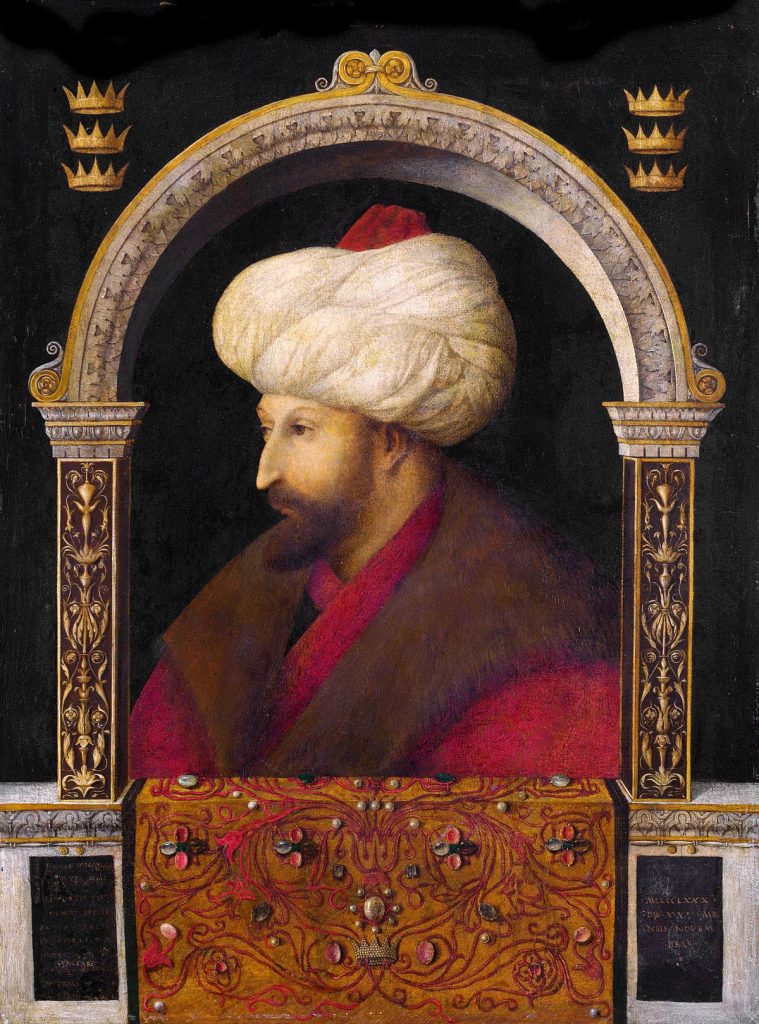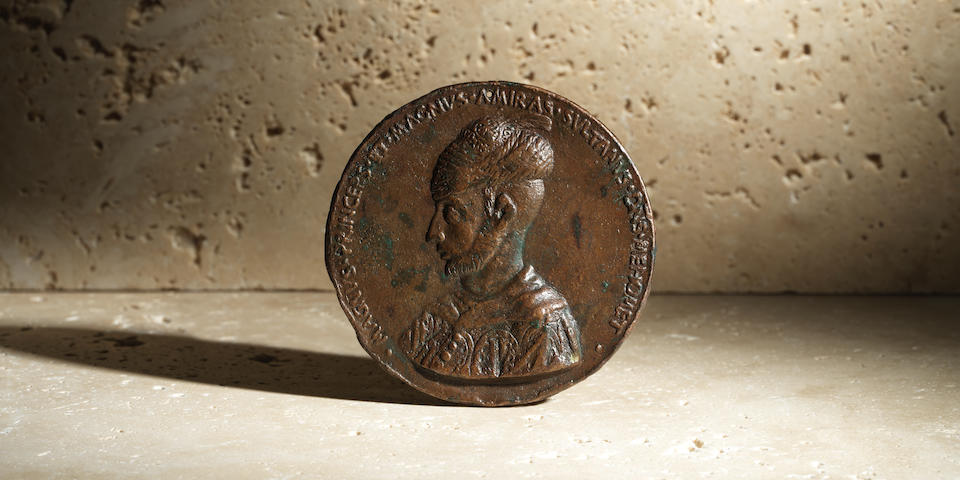Once thought lost, a small bronze fifteenth century medallion portraying Ottoman Sultan Mehmed II (1432-1481) is up for auction at Bonhams in May. It has been valued at between £1.5 million and £2 million by the auction house.
Commissioned by Sultan Mehmed II before his 1453 conquest of Constantinople to wear as a lucky charm around his neck, the medallion bears what is believed to be the only surviving portrait of the sultan as a young man.
The talisman, cast in bronze, had been lost for centuries, but was rediscovered at the turn of the millennium when it was included in a sale of Italian Renaissance medals.
The item is expected to be a star item at Bonhams’ Islamic and Indian Art Sale at New Bond Street on 21 May.
Earliest known portrait of an Islamic ruler by a Western artist
The medallion is believed to be the earliest known portrait of an Islamic ruler by a Western artist and offers a precious record of the Ottoman Sultan’s youth and ambition.
Oliver White, Bonhams Head of Islamic and Indian Art, commented, “This major rediscovery can be placed in a period of Mehmed’s life when almost no direct material evidence of its kind has survived. It is the only known portrait of Mehmed II showing him as a young man, before he conquered Constantinople in 1453, a feat thought impossible.
“The medallion is thought to have been worn by the Sultan as a personal talisman, providing a physical manifestation of his imperial aspirations as the successor to the Emperors of Rome.”
Writing for issue 78 of Bonhams Magazine, British historian Peter Frankopan states: “Mehmed II was not only a conqueror but a complex and fascinating ruler. For his enemies, he was a fearful figure whose success foretold the Apocalypse; for others, he was a patron, an intellectual and a model master, who was willing to promote on merit, to ask questions and to listen to advice. That is what we can see when we look at this talismanic portrait – a paragon of a man who commanded respect from his followers.” Read the full article, Facing the World, here.
Mehmed II: A modern day hero
Mehmed II, widely known as Mehmed the Conqueror, is considered a hero by many in modern-day Turkiye. He was twice the Sultan of the Ottoman Empire from 1444 to 1446 and then later from 1451 to May 1481.
At the age of 21, he conquered Constantinople (now Istanbul) and brought an end to the Byzantine Empire. The capture of Constantinople brought incomparable glory and prestige to the young Sultan and gave him immense authority and he began to look upon himself as the natural successor to the empire of Constantine the Great.

Following the fall of Constantinople, Mehmed II continued his conquests both in Asia and Europe, and at home made many political and social reforms. He encouraged the arts and sciences, gathering Italian humanists and Greek scholars to his court, and by the end of his reign, had transformed Constantinople into a thriving imperial capital.
Rediscovered in a collection of Italian Renaissance medals
The bronze portrait of Mehmed II re-emerged in 2000 when it was included in the sale of an important 19th Century collection of Italian Renaissance medals.
The medallion was identified not only by Mehmed II’s physical appearance but also from the Latin text surrounding the medallion, which reads “Great Prince and Great Emir, Sultan Master Mehmet”.
Notably absent was an “Imperatorial” title, which would come to be included on medals produced after the fall of Constantinople.
It is believed the portrait was taken from life by a skilled Renaissance artist, whose name remains unknown. Most interesting is the absence of any design or lettering on the reverse of the medallion, together with its portable size and neatly formed piercing at its top, suggesting the medallion was worn as a talisman and was a deeply personal and valued possession of the great Sultan.
In his later life, Sultan Mehmed II was to commission portraits in various mediums. Among the more significant is a cast bronze medal commissioned in the early to mid-1470s from the artist Costanzo da Ferrara, housed in the National Gallery of Art, Washington D.C, and the widely published portrait in oil by the celebrated Venetian artist Gentile Bellini (1429-1507), which is in the National Gallery, London.
Main image, top, of bronze talisman bearing portrait of young Ottoman Sultan Mehmed II. Photo © Bonhams




